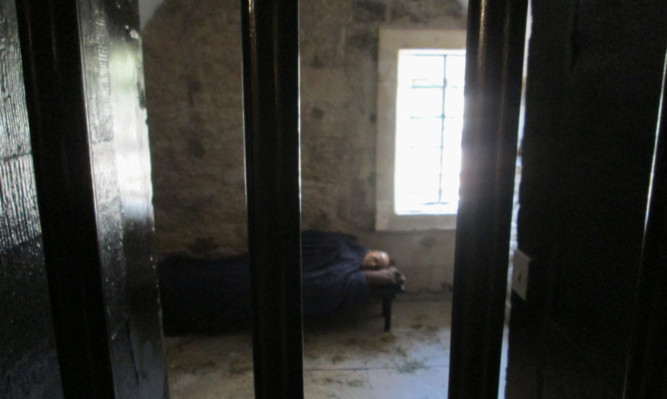From gruesome public hangings to children locked up for stealing vegetables, the history of crime and punishment in Cupar is a fascinating journey which features in a new exhibition.
Before the controversial closure of Cupar Sheriff Court last year, Fife’s former county town had been the area’s centre for judiciary for over 800 years.
The original town grew up around the site of the long since demolished Cupar Castle, which was the seat of the sheriff and was owned by the earls of Fife.
But perhaps one of the most infamous and darkest stories in Cupar’s long connection with crime and punishment came on July 5, 1852, when the town witnessed its last ever public hanging.
Irish brothers Michael and Peter Scanlan, aged 25 and 22 respectively, had travelled from County Mayo to start jobs in nearby lime works.
They asked Margaret Maxwell, 66, who lived near the lime works at Hilton of Forthar, if she would lend them some money, but the old lady flatly refused.
So, along with another Irishman, Thomas McManus, they decided to rob her instead.
On the night of February 15, 1852, the brothers and McManus dragged Mrs Maxwell out of bed, stole a few coins and trinkets, and smashed in her skull before leaving.
When all three were arrested, McManus, while admitting his part in the murder, wasn’t charged with the capital crime and testified against the two brothers.
The Scanlans were hanged on Monday July 5, 1852, outside Cupar Prison in what is now the north-east corner of Fluthers car park, on a scaffold brought from Edinburgh.
It had been 20 years since the last execution in the town, and a crowd of 10,000 came to watch.
Amid fears that a group of Irishmen were about to free the pair, who protested their innocence until the end, a detachment of foot and horse soldiers and 200 special constables were brought in to deter any rescue attempt.
A contemporary report described the event as a “braw day for a hanging”.
Tales of hangmen, scaffolds, and public executions are, of course, a relic of Scotland’s past that belong in the dark and distant mists of time.
But the story of the Scanlans is just one that will be resurrected in a fascinating exhibition being put on in Cupar by local archivist and historian Steve Penrice.
The free exhibition, starting at 6pm on Friday October 2, takes place in the old Cupar jail at Watts, on Coal Road, whilst one of the original cells, until recently a store room for the now Watts pub, has been transformed by Steve into an exhibition space.
It’s the latest delve into Cupar’s past by Steve who is well known in the town for his archive photographic exhibitions and historic walking tours.
The 47-year-old moved to Cupar from Glasgow 40 years ago when his dad Sam, now retired, became the station master at Cupar.
As a seven-year-old at Castlehill Primary, Steve was fascinated by the old storage barrels at a former tobacconist on Crossgate and remembers the straw on the floors of old butchers and pubs, as well as the old sheep market on the site of what is now Lidl.
He told The Courier: “Moving up from Glasgow it was a real eye opener and whole new experience for me. Those early experiences of old Cupar sparked my interest in the past.”
Leaving school at 16 to work in the town’s former Fayre Freeze frozen foods store on Bonnygate, he went on to work at the former Galloway clothing store for 20 years, and was fascinated by older customers recounting tales of old Cupar. He started collecting photographs and artifacts and it “snowballed” from there. He put on his first exhibition in 1995 with financial assistance from the Cupar Common Good Fund and Cupar Round Table.
Steve, who is now manager of Keystore on Lady Wynd, chose Watts as the venue for this latest exhibition given its history as the town jail from 1814 until the 1840s. It replaced the long-since demolished tollbooth which had been in Crossgate from medieval times.
He added: “There were six cells originally, but only one remains, just inside the main door on the left. It was the only cell with a fireplace and was used for sick prisoners. The original bars are still there on the windows from 1814. I found a wee story the other day about a wee girl locked up in the early 1800s for stealing potatoes.”
By the time of the Scanlan hangings, Cupar’s former third jail (now the TA centre at Castlebank Road) had been in use for decades after the Watts building was declared unsuitable as a prison.
Steve added: “I love to get out there and visit the places where the history happened. On the Drum Road at Cuparmuir, for example, a clump of trees marks the scene of one of the most notorious events in Cupar’s history. It occupies the exact spot where in June 1743 a man was hanged for stealing a horse valued at £5.
“It’s important to keep the heritage and the stories alive.”
